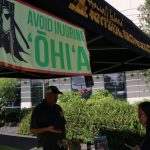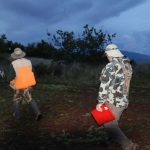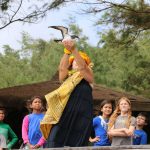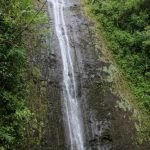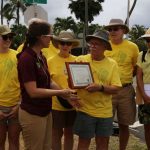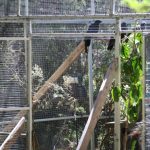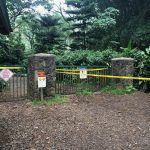(Hilo) – Rapid ʻŌhiʻa Death (ROD), the fungal disease that’s impacted hundreds of thousands of acres of native ‘ōhi‘a forests in Hawai‘i, is the actual reason for the ʻŌhiʻa Love Festival today at the ‘Imiloa Astronomy Center. Now in its second year, more than a thousand people honored ‘ōhi‘a and the many people working to stop the spread of ROD and find effective treatments for it. The festival goes beyond the disease.
Forestry & Wildlife Announcements
(Maunakea) – Two weeks before the hunting season for game birds opens in Hawai‘i, hunters, researchers and staff from the DLNR Division of Forestry and Wildlife (DOFAW) traipsed across the rugged terrain on Maunakea’s north slopes to gain a better understanding of game bird density, variety and populations.
(Lihu‘e) – School children from Kalaheo Elementary School and Island School helped release ten fledgling ‘A‘o (Newell’s Shearwaters) over the last two days during the annual E Ho‘opomaika‘i ‘ia na Manu ‘A‘o (A Cultural Release of the Native Newell’s Shearwater) event at Lydgate Park. The young seabirds had been rescued by people then rehabilitated by Save Our Shearwaters (SOS). Before they started their journey back out to sea, Kupuna Maureen Fodale offered a pule (Hawaiian prayer).
(Honolulu) - Following the rockslide event more than two weeks ago, the Manoa Falls Trail and Aihualama Trail reopen tomorrow, Monday, October 8, 2018. The trails also reopen to commercial tour vendors on Monday.
(Honolulu) – Deer hunting enthusiasts can soon apply to hunt for the new season. The Department of Land and Natural Resources, Division of Forestry and Wildlife (DOFAW) announces that application forms for the 2019 Lana’i Axis deer hunting season, together with instruction sheets, will be available at all DOFAW Offices statewide beginning next Monday October 1, 2018.
(HONOLULU) — Are you passionate about trees and their value for our well-being? Do you have professional experience you would like to apply to improving our urban and community forests and green spaces across the state? The Kaulunani Urban and Community Forestry Program is seeking qualified and enthusiastic applicants for its Urban and Community Forestry Advisory Council.
FOR IMMEDIATE RELEASE: September 25, 2018 ADDITIONAL ‘ALALĀ RELEASED INTO NATURAL AREA RESERVE ON HAWAI‘I ISLAND Five More Birds Take Flight in The Forest (Click on image to watch video) (Hilo, HI) – Tomorrow will… Read More »
(Manoa) – Over the course of eight hours today, officers from the DLNR Division of Conservation and Resources Enforcement (DOCARE) contacted and educated more than 100 people concerning the current Manoa Falls Trail closure.
(HONOLULU) – The contributions of hunters and fishers to conservation will again be recognized nationally and in Hawai‘i during National Hunting and Fishing Day events. This will be Hawai‘i’s 28th year of recognizing the event and for the first-time activities are scheduled over two separate weekends.
HILO -The Department of Land and Natural Resources (DLNR) Division of Forestry and Wildlife (DOFAW) announces a change in dates for the hunting season in the Pu‘u Wa‘awa‘a Forest Reserve (PWW) Youth and Disabled Hunt and Makai Sections and the special Ungulate Control Program for the PWW Mauka section. The recent Waikoloa wildland fire delayed the opening of the hunt. These date changes will extend the season to accommodate for the loss of hunting days during the first weekend.

